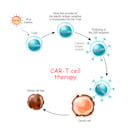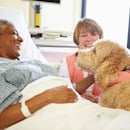
Communication and Quality Patient Care
Professional communication is critical to safe, effective patient care. Communication is a basic concept, yet communication failures result in disastrous outcomes for both patients and nurses. Both written communication such as documentation and oral communication such as hand-off reporting play important roles in patient safety.
Did You Know...
- When transparent and effective communication is not used, patients become suspicious that they are not being told everything. Suspicious patients tend to bring litigation more frequently than patients who feel that hospital personnel are transparent and trustworthy.
- 69% of communication cases allege that the patient did not receive information that he or she needed to understand their health issues, make informed decisions about treatment options, or manage their long-term
care (Hoffman & Raman, 2012).
Does Your Facility Have a Failure to Communicate?
- If your patient can clearly express his complaint, symptoms, history, and his comprehension of the education received, he/she becomes an equal partner with a physician or nurse who is managing care. This is an example of clear, transparent, and complete communication. No failure to communicate here.
- If there are policies in place to ensure that verbal/phone orders are only taken in an emergency and that the orders are read back to the provider and medication spelling and dosing are verified? No failure to communicate here.
- If your facility engages professionally trained interpreters (American Disability Act National Network [ADATA],2014). No failure to communicate here.
How Can You Determine Why an Untoward Event Happened?
- Report the incident so that the quality team may start a Root Cause Analysis (RCA). This process systematically looks at the system and process issues, not the nurse’s specific actions.
The RCA process results in an action plan that identifies the strategies that the healthcare facility intends to implement to reduce the risk of similar events happening in the future. These action plans should include strategies for revising system issues along with individual issues and should not be punitive in nature (The Joint Commission, 2015).
Communication is the foundation for quality nursing care. All the elements of effective communication cannot be adequately discussed in this short forum. You can review the elements of effective communication in the RN.com course: Professional Communication: Speak up Speak Well.
References
American Disability Act National Network. (2014). Effective Communication.
Hoffman, J. & Raman, S. (2012). Communication factors in malpractice cases.
The Joint Commission. (2015). Sentinel event data-root causes by event type.




